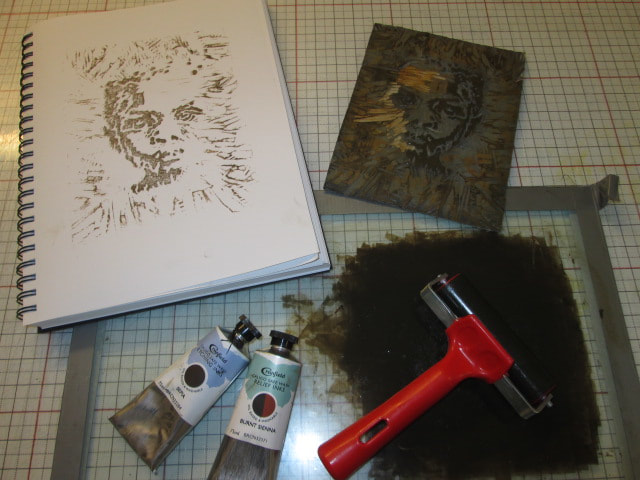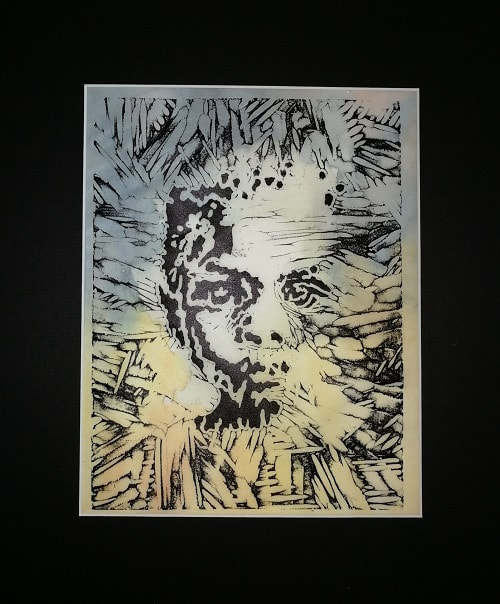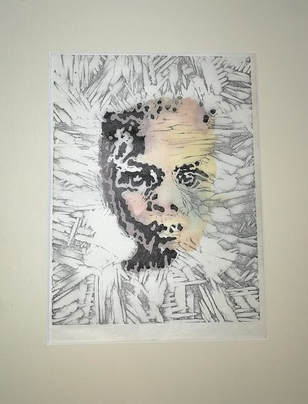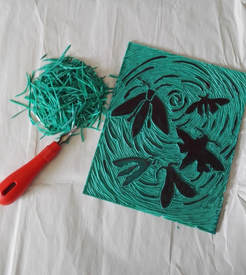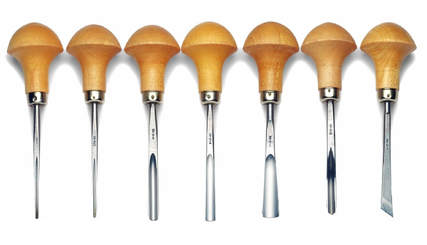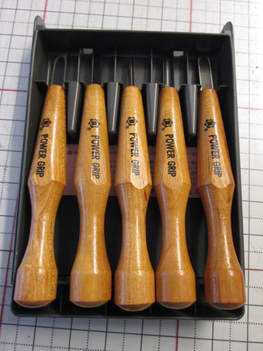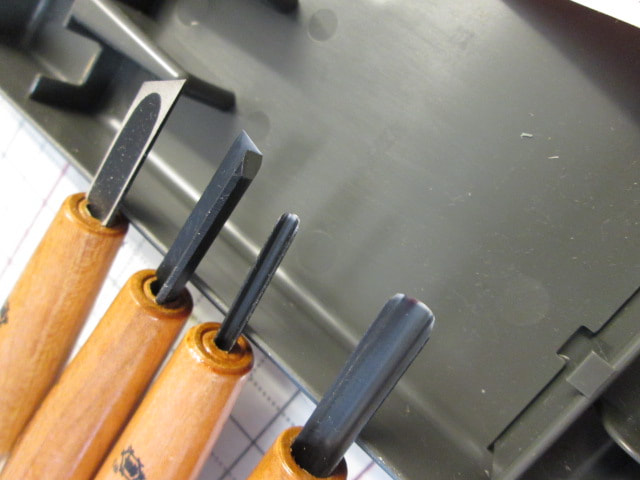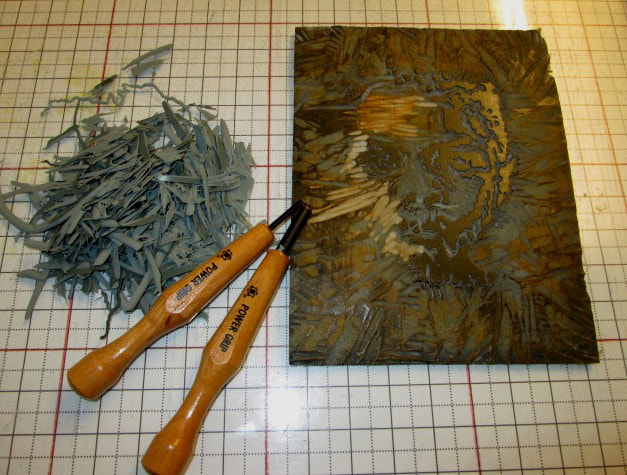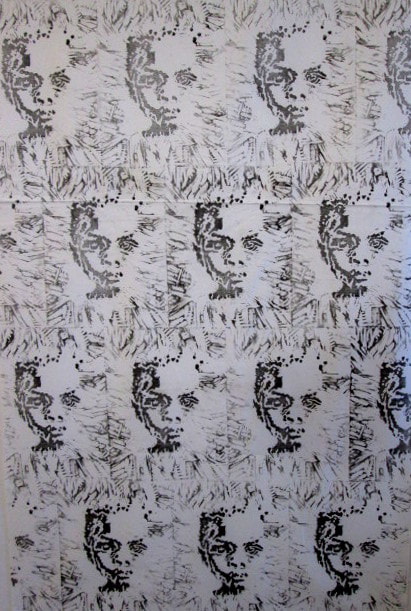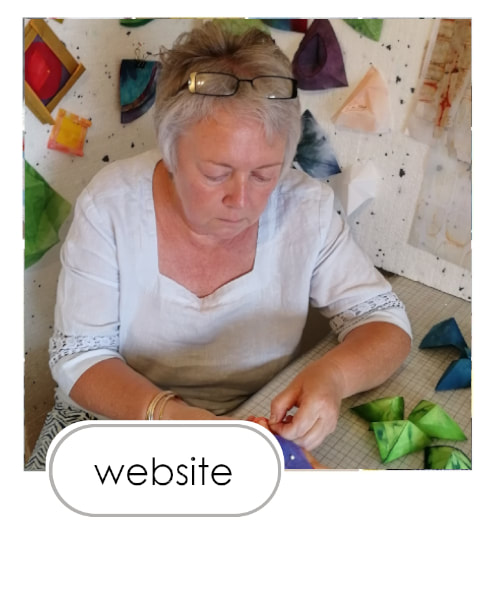|
Lino printing is one of my favourite methods of mark making on fabric - along with mono printing from glass sheets covered in ink. Although two quite different processes I have found the two generally go hand in hand. In this post I'll share the lino prints I am making and in my next post I will show you how the mono printing is going.
A few weeks ago I went on an excellent course at Ardington School of Crafts in Oxfordshire. It is a lovely place and is very well run by Simon and Yvonne Sonsino. The course was run by painter and printmaker Jessica Rose (www.jessicaroseartist.co.uk) and was one of the best I have been on in a long time. Jessica is lots of fun and very knowledgeable. She passed on all sorts of helpful information - the sort you just can't get from watching a YouTube video! This is the print block I made on the day, reworked a little to clean it up (hence the pale coloured gouges you can see on the lino block above). At the course I learned a clever technique that allowed me to make prints with the block on Japanese gampi paper and then add colour to a separate layer behind the paper. The effect is very delicate and as it uses different layers is a technique I would like to explore with fabric.
Mono print and ink wash layers: print on Japanese gampi paper, ink on watercolour paper
I love the way the bold black printed image on the left is really crisp - the black mount around it really enhances the print. In contrast, the white mount of the right subdues it considerably. (same print in both) I also like the way the water based ink wash that is placed behind the print subtly shows through the beautifully thin and floaty gampi paper. (Carrying a wet fresh print on gampi paper across a crowded workshop requires a lot of planning and no sudden wafts of air!) Now I have had time to experiment with this technique a little more I have made some samples that I want to use in a small new series that will join the others in my In Their Shoes series. The quilts I want to make are going to focus on the many forms of child labour, from children working within a family setting all the way to child slavery.
Up until now all my lino printing has been self taught. I have learned a lot by myself and really enjoy spending a few hours carving away at various different blocks. As a novice I generally prefer to carve the softer vinyl blocks that are available in most art shops and on line to the harder and sometimes more crumbly grey lino, often referred to as 'Battleship'. (The green block below is an example of one of the softer relief vinyls which is easier to cut, but can be a little stretchy, causing other issues as you carve.)
As I was going to the course I decided I really needed to make the most of having an expert to teach me, so I had a splurge and bought a selection of different types of lino block material and new set of carving tools. In the past I have relied on the cheap and cheerful red plastic handled cutting tool with interchangeable blades. I must say, there is nothing terribly wrong with them and I have made some great print blocks using them. But my blades are all blunt and rather than spend another £10 on a new set of blades I decided to see what else was available. Turns out there are lots to choose from and a lot of money can be spent! For a brief moment I did consider the beautifully made Pfeil carving tools but I just couldn't figure out which of the huge number of different shapes and sizes I should buy (too much choice is no choice at all as the saying goes). They were too expensive for me to just guess so I decided to look elsewhere. (Since then I have discovered this fantastic website and blog which might have helped my had I found it earlier: https://www.drawcutinkpress.com/pfeil-lino-cutting-tools-guide/ )
After much searching I ended up choosing this set of Japanese wood carving tools - and they have turned out to be fabulous to use. Of the 5 in the box I have found 4 to be just the sizes I need. (I'm not really sure what to do with the 5th one yet!). Compared to the small red handles tool these cut through even old tough lino with ease.
This is a close up of the block I carved at the course with my lovely new cutters. I used a piece of fresh grey lino - and was amazed at how easy it was to cut compared to using the little red handled cutter - I know it is an old chestnut, but it really was like cutting into butter. I needed no real effort at all to cut the lino and the lines I cut were very clean allowing me to get lots of detail and fiddly bits. In future I think I will be choosing grey lino blocks rather than the easy carve vinyl if these tools continue to perform as they did on first use. (But, if I do use one of those little red cutters again I think I will prefer to choose one of the softer types of lino substitutes and sacrifice the fine detail).
And this is a piece of white Kona cotton fabric that I printed using the block. I plan to use this fabric and lots more in a new series of quilts I have in mind to make concerning child labour. In my next post I will share the mono prints that I plan to use along with this fabric. Thanks for reading.
|
|
